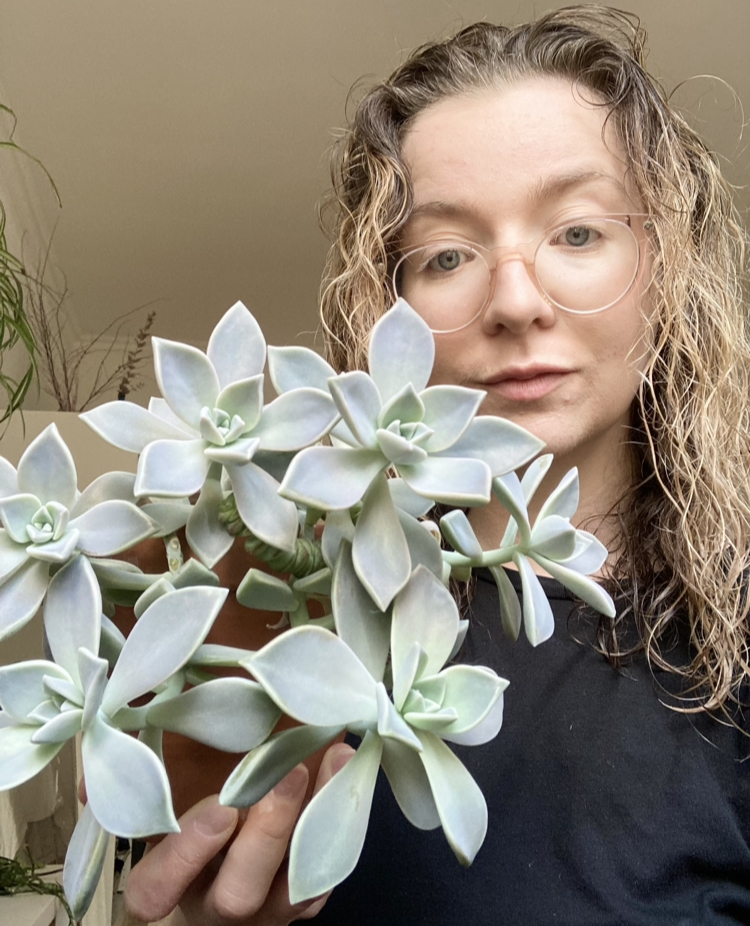There is no end to the surprises that nature offers us; check out these super unique flowers that change color due to pH change!
Wouldn’t you want something unique among so many different flower choices available? This article will show you some amazing blooms that do this cool trick. You’ll be surprised, there are not just one or two but so many color-changing flowers!
How Can pH Make Flowers Change Colors?
Before we jump right into the list, let’s first understand why flowers change color. No worries if you are not good at chemistry; this is pretty simple!
Most flowers contain a chemical pigment called anthocyanin, which is responsible for their coloration. The colors, or specifically the hues, resulting from anthocyanin, depend on the aluminum ions the plant absorbs from the soil. The soil pH plays a huge role in the availability of aluminum ions in the soil.
For example, if the pH is below 7, i.e., the soil is acidic, the plant will have increased uptake of the ions, resulting in deeper, more cool-toned colors (especially in hydrangea).
On the other hand, if the soil is alkaline, with a pH above 7, the aluminum ion uptake will be less, resulting in warm-toned flowers (you will notice pink or red flowers in hydrangea). Pretty cool, right?
Flowers That Change Color Due to pH Change
1. Hydrangea
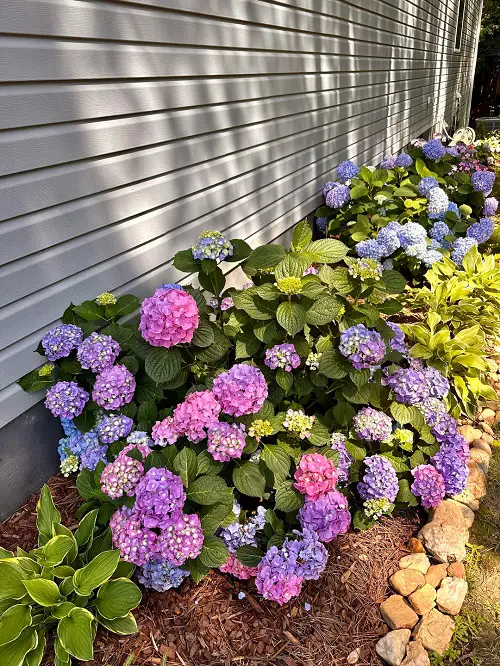
Botanical Name: Hydrangea macrophylla
USDA Zones: 3-9
As explained above, the colors of Hydrangea range from blue and lavender to pink and red. So, imagine if you live in Georgia, where the soil is acidic and has bits of granite–you will witness gorgeous blue-to-lavender flowers.
Alternatively, if you grow these in Florida, where the soil is basic due to limestone, you will get pink blooms. So, how can you make them change colors when you want? Here’s how!
Note: You won’t see the color-changing phenomenon if you have white hydrangeas. They typically remain white but might turn pink with age, especially varieties like “Annabelle”.
2. Morning Glory

Botanical Name: Ipomoea tricolor cv.
USDA Zones: 3a-10b
Not every morning glory variety shows a color change due to the soil pH, but many do. One great example is the ‘Heavenly Blue’ cultivar! In fact, it is the first morning glory variety to show this phenomenon, with flowers turning from blue to red or pink.
The best part about Morning Glory is that it can grow just about anywhere. It will even bloom better in soil with less organic matter! Don’t skip a trellis when growing it!
Fun Fact: The color change in morning glories is also related to the time of day and the flower’s age. The pH of the cell sap inside the flower changes over time, changing the color as well.
3. Four O’Clocks
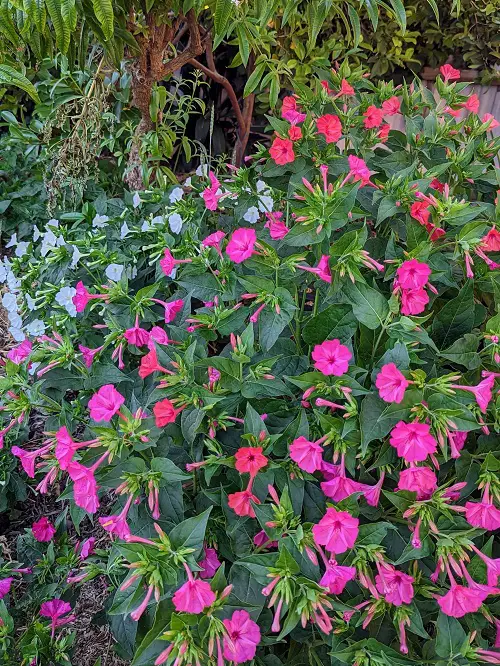
Botanical Name: Mirabilis jalapa
USDA Zones: 7-11
Four o’clock is a lovely plant to have because its flowers bloom late in the day and scent heavenly. Of course, the blooms also change color due to pH changes and internal chemicals like betacyanin and betaxanthin.
You will see more pink or red flowers in acidic soil, while in alkaline soil, they will be lighter yellow or white.
4. Petunia
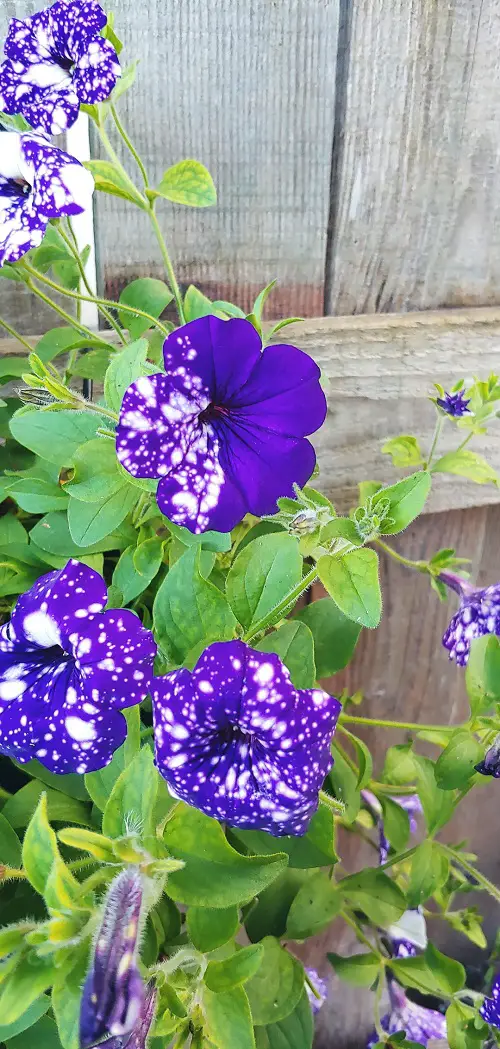
Botanical Name: Petunia hybrida
USDA Zones: 9a-11b
Did you know that petunias are excellent soil pH indicators? Like hydrangeas, they show off sharp color changes in blooms depending on whether the soil is acidic or neutral.
Cultivars producing purplish blooms in acidic soils exhibit subtle color changes and turn into bright violet.
5. Hibiscus
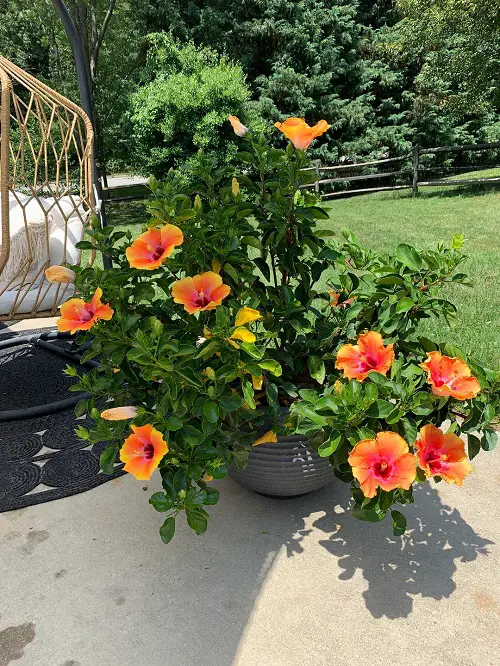
Botanical Name: Hibiscus mutabilis
USDA Zones: 5-11
Most hibiscus species have genetically pre-determined colors, and the pigments do not usually change with time. However, anthocyanin production changes due to soil pH.
6. Butterfly Pea
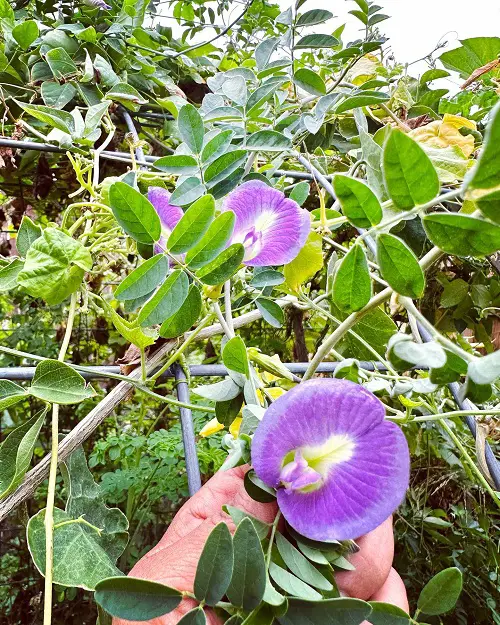
Botanical Name: Clitoria ternatea
USDA Zones: 10a-12b
Why don’t you try growing butterfly peas? Their flowers have a natural royal blue hue that can capture anyone’s attention.
But if you don’t like that and want to change it, a bit of lemon juice in the soil to change the pH will turn the soil acidic and cause the flowers to change to a pink-purple shade, it happens more clearly in the extract you use to make tea.
7. Larkspur
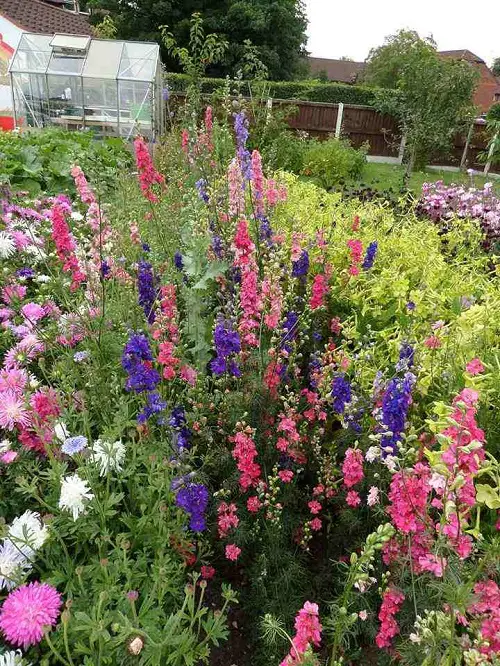
Botanical Name: Delphinium spp.
USDA Zones: 2-11
Did you know delphiniums can bloom a single color in their first year and then a completely different one the next? Larkspur varieties, particularly those with blue or purple blooms, can change color in response to soil pH, with blue/purple shade becoming pink or white in more alkaline conditions. Cool, right? Why don’t you try these varieties for starters?
So, which of these unique color-changing blooms will you add to your collection next? Let us know in the comments below! And if you’re going to try changing their color, here’s how to change the soil pH the right way!

